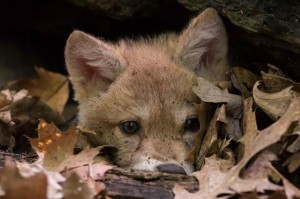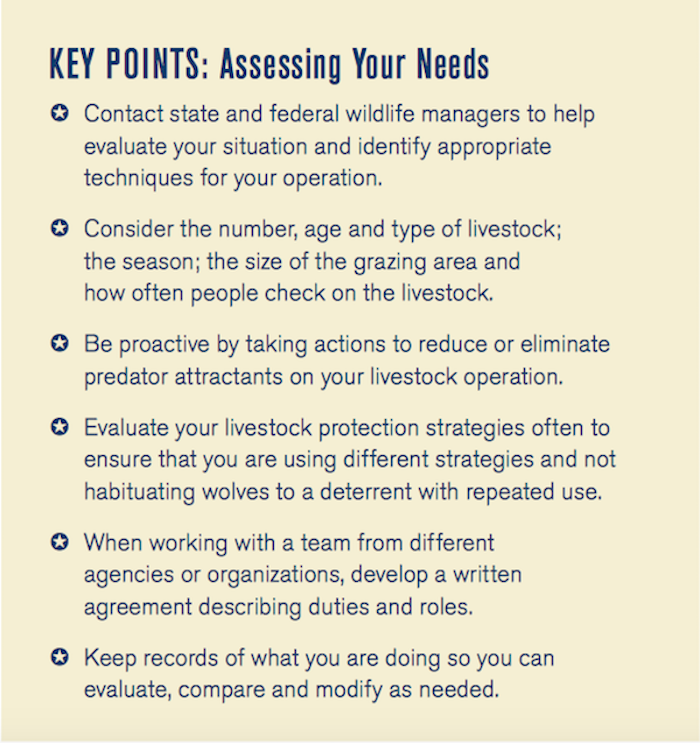
For hundreds of years wolves that pose a threat to livestock or property have been killed. As the United States expanded west, efforts to eradicate the species from the North American continent were institutionalized. They worked. By the late 1950s, the native gray wolf was all but extinct in the lower 48 with the exception of a small population in northern most Minnesota. Conservationists intervened and, slowly but surely, populations recovered. Today, as packs regain territory around the Great Lakes and states west of the Rockies, they’re once again running into herds of cattle.
Hoping to counter the kill ‘em all mindset of past centuries with alternatives that work, Defenders of Wildlife—the national, non-profit conservation organization—has released an updated version of its 2008 manual Livestock and Wolves: A Guide to Nonlethal Tools and Methods to Reduce Conflicts. This 2nd edition builds on the now decade old collaboration between wildlife conservationists, biologists, agency specialists and ranchers operating in wolf territory with the intention of helping livestock producers “best address the root cause of wolf depredation in economical ways that protect both livestock and wildlife.”
The manual, which can viewed in its entirety here, is broken down into eight sections designed to provide ranchers with the resources they need to minimize their interaction with wolves and, when packs pose a threat to their business, implement nonlethal solutions.
Assessing Your Needs
Terrain and conditions vary by region and the manual suggests, “Deciding which tools, methods and strategies are suitable for protecting your livestock depends on many different factors.” The right alternative to lethal measures is not a one size fits all proposition. In addition to providing some low and high-tech considerations, the manual includes a directory of the state and federal agencies available for assistance in wolf country.
Here are the Cliff Notes:

Reducing Attractants
While acknowledging it’s not always possible, the manual insists that a proactive approach—taking steps to prevent your livestock operation from attracting wolves in the first place—is often the best strategy. In addition to being skilled hunters, wolves are opportunistic scavengers and attracted to the scent of sick or already dead food sources. Therefore quickly removing carcasses, or relocating them away from homes and areas used by the healthy herd can go a long way in reducing a pattern of conflict.
“Once animals that are both scavengers and hunters—such as wolves, bears and eagles—are drawn to an area, the likelihood increases that they will go from feeding on a carcass to hunting and killing live cattle or sheep nearby.”
Because once wolves become accustomed to a food source, the chances are good that they will return in hopes of an easy meal. In the absence of a rendering facility or carcass-composting site “carcass pits”—holes used to contain dead livestock in a designated area, which can then be enclosed with fencing—can be beneficial.
“In northeastern Oregon, biologists discovered livestock carcass pits using only satellite data from radio-collared wolves that showed frequent visits to the sites of the pits. Once producers removed the pits, the wolves lost interest and eventually stopped visiting these sites.”
The manual also explains “the afterbirth from calving can be a powerful attractant for wolves, a fact to consider when planning the timing and location of calving activities.”
Working with Livestock Guardian Dogs
Though it’s widely understood that modern dogs are the direct descendants of gray wolves, recent studies suggest it’s possible the two shared a common, now extinct ancestor and diverged 11,000-16,000 years ago. While this throws a wrench in the notion that the domestication of dogs began with a few less aggressive gray wolves hanging around in our hunting and gathering days, there is still much to learn. Regardless, dogs have lived alongside livestock for centuries and today the practice of breeding dogs to protect cattle from predators is a science in its own right.
Source: Livestock and Wolves: A Guide to Nonlethal Tools and Methods to Reduce Conflicts – Rural America
